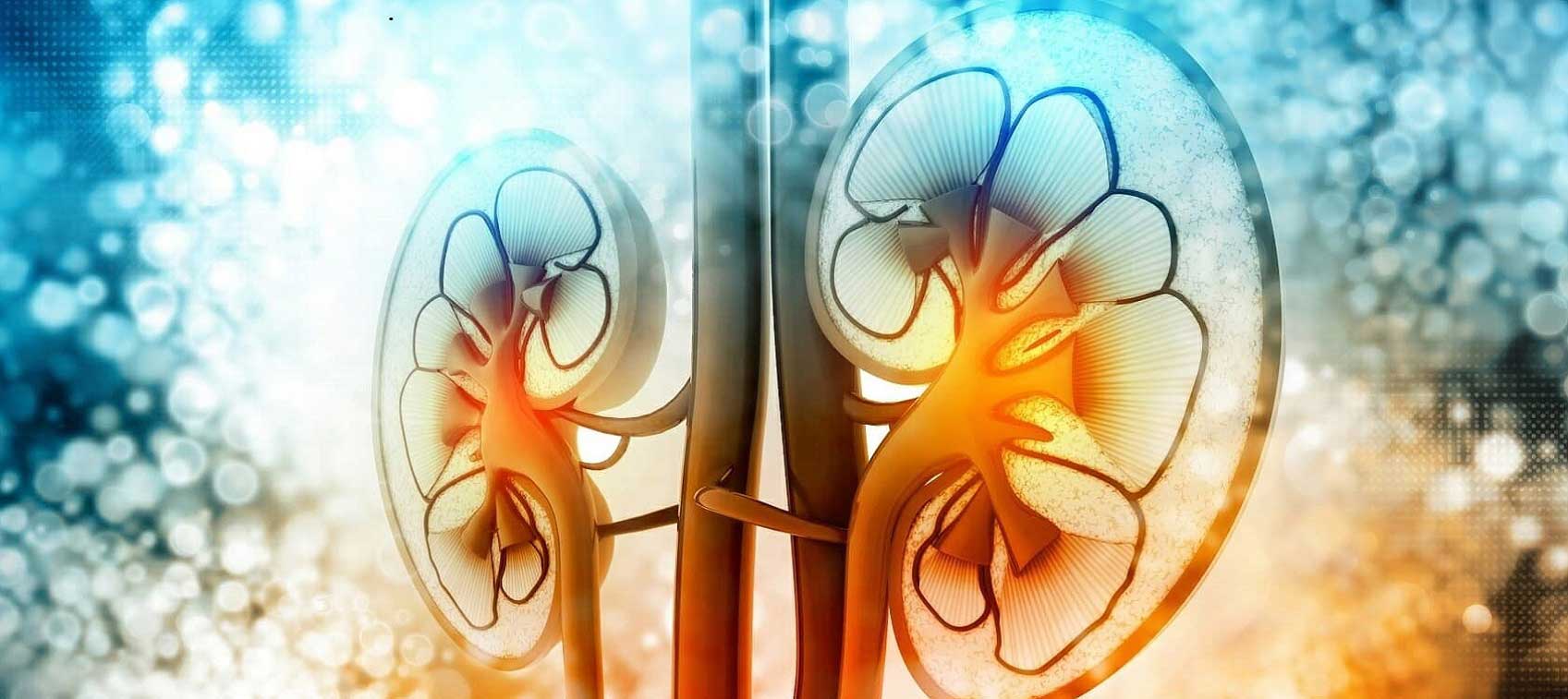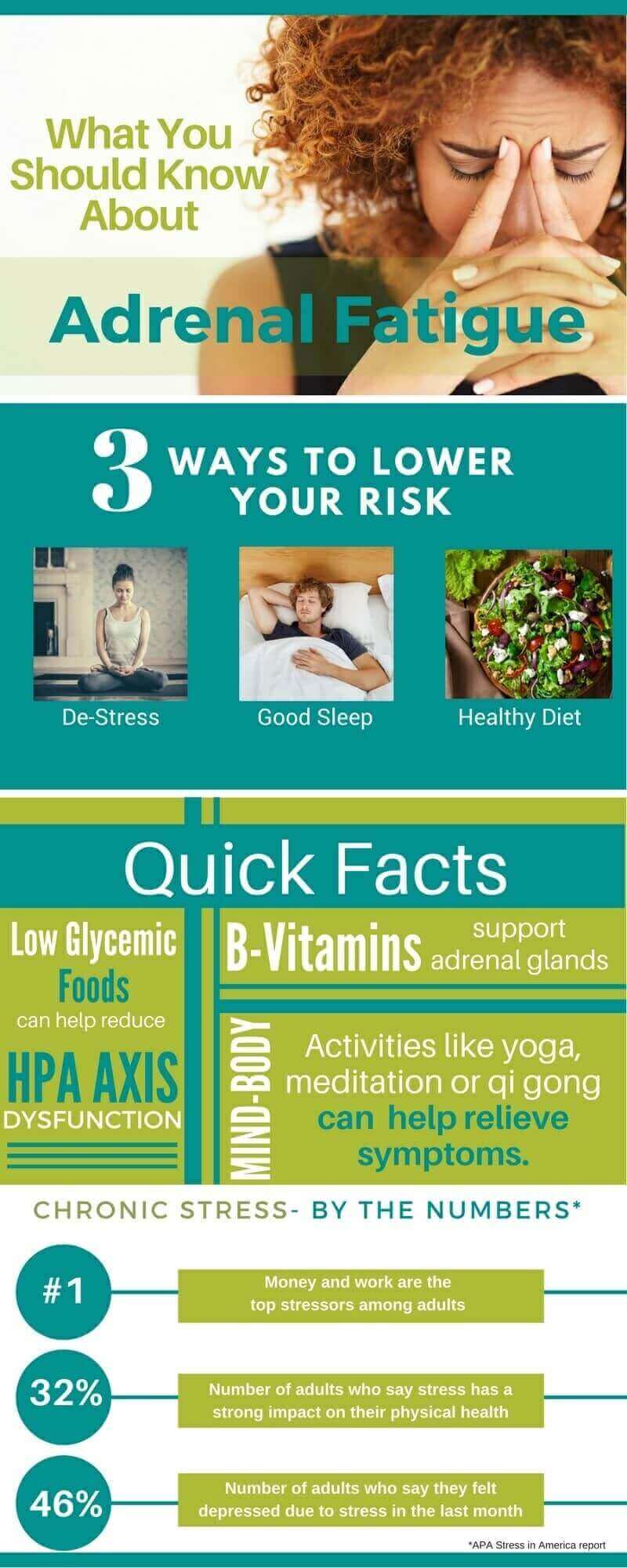
If you’ve talked to friends or family you may have heard the term “adrenal fatigue” in conversation. Adrenal fatigue is a condition where the adrenal glands are unable to produce sufficient amounts of hormones — particularly the “stress” hormone cortisol which helps your body manage stress.
Without enough cortisol, you may feel wired, tired, and burned out. Yet, while the term adrenal fatigue is quite common, it is really a misnomer since you can also experience fatigue with higher than normal levels of cortisol. Yet, the culprit is still the same, worn out adrenal glands.
The Truth About Adrenal Fatigue
The adrenal glands, which sit atop the kidneys, are a part of the endocrine system--a network of glands that regulate metabolism, growth and development, tissue function, sexual function, reproduction, sleep, and mood, among other things. Plus, it regulates your body’s response to stress.
In conventional medicine the term “adrenal fatigue” doesn’t exist and is considered an “alternative” diagnosis. What does exist are Addison’s Disease, a condition resulting from extremely low cortisol levels, and Cushing’s syndrome which is excess cortisol production.
Unfortunately, some physicians will say the adrenal glands are in good shape if you don’t suffer from Addison’s disease or Cushing’s Syndrome. This could not be further from the truth. Assessing the health of the adrenal glands is much more involved than just looking at cortisol levels.
It’s also important to look at the role of the hypothalamus-pituitary-adrenal (HPA) axis-which is the feedback loop between the hypothalamus, pituitary gland, and adrenal glands. The HPA axis regulates the stress response in your body.
For example, if you see a bear while hiking in the woods, your brain interprets this encounter as a stressor and your hypothalamus releases corticotropin-releasing hormone (CRH) which acts on the pituitary gland to stimulate the release adrenocorticotropic hormone (ACTH). ACTH, in turn, stimulates the release of cortisol.
Cortisol signals your body to quickly react so you can run away (or hide!) from the bear. Among its many functions, cortisol helps stimulate the release of blood sugar, increases blood pressure, and modulates the immune response. In small amounts, the production and release of cortisol into your bloodstream is a good thing, and we couldn’t live without it.
Problems Arise When Cortisol Levels Stay Elevated for Too Long
Most people don’t come across bears daily, but biochemically we do experience chronic stressors in a similar way which places a strain on the HPA axis. Chronic stressors include sickness, pollution, processed foods, toxic relationships, cell phones, social media, mortgages, political stress, financial instability, and the list goes on and on.
Most of us are inundated with so much chronic stress we may not even be aware of it! These chronic stressors continually stimulate the HPA axis keeping your body in a perpetual state of stress, or “fight or flight” mode. If you experience stress all throughout your day then your HPA axis isn’t allowed to rest, and hormone levels—including cortisol—get out of balance.
At this point in the game you may have too much cortisol or too little cortisol, and your cortisol production may be completely out of balance. Plus, other adrenal hormones like dehydroepiandrosterone (DHEA), aldosterone, and epinephrine or norepinephrine may be affected.
What are the Symptoms of Adrenal Fatigue?
If chronic stress is not addressed, your HPA axis begins to function poorly, kind of like car without a tune up.
Adrenal fatigue symptoms can include:
- Fatigue (physical and/or mental)
- Difficulty getting out of bed in the morning
- Insomnia (difficulty falling and/or staying asleep)
- Irritability (“snappy,” or short tempered)
- Feeling hypoglycemic or having frequent blood sugar crashes
- Lightheaded, or dizzy when standing up (i.e. orthostatic hypotension)
- Lowered immunity, or poor immune system function
- Cognitive dysfunction, or “brain fog”
- Inability to handle stress
- Craving for salt and salty foods
The Good News Is You Can Treat Adrenal Fatigue
The good news is HPA axis dysfunction, or “adrenal fatigue” as some like to call it, is treatable, and symptoms can be reversed with simple diet and lifestyle changes:
- Get plenty of sleep. Focus on going to bed before 10 p.m.
- Eat low glycemic foods. Balance carbohydrates with proteins and healthy fats.
- Engage in light exercise, like a short walk around the neighborhood.
- Spend time in nature.
- Try mind-body activities like yoga, meditation or qi gong.
- Surround yourself with loving friends and family – and those that support and nourish your life journey.
- Use nutraceuticals like B-Vitamins, Vitamin C, magnesium, and adaptogenic herbs to support the adrenal glands and HPA axis.
For many suffering with HPA axis dysfunction, treatment can take many months and often a year or more to fully heal. The key to supporting adrenal health is to reduce the chronic stressors and give the body the rest that it needs to recover. I cannot emphasize the importance of meditation and other stress reduction techniques to help your nervous system adapt to chronic and persistent stress. Meditation has the incredible ability to support the parasympathetic, or calming branch of the nervous system, which allows you to feel more centered and relaxed.



